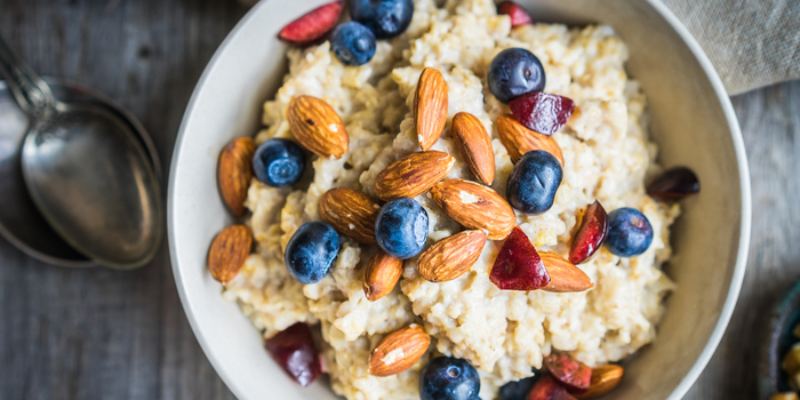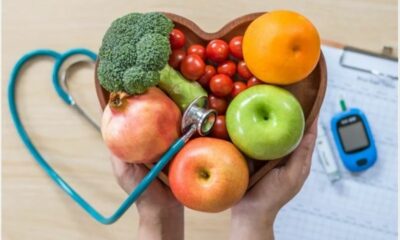Living with diabetes or prediabetes can feel overwhelming, especially when it comes to managing blood sugar levels. Fortunately, dietary choices play a significant role in achieving optimal blood sugar control. This guide explores the concept of the Glycemic Index (GI) and how incorporating low-GI foods into your diet can help you achieve balanced blood sugar levels and improve your overall well-being.
Understanding the Glycemic Index (GI)
The Glycemic Index (GI) is a ranking system that assigns a value to carbohydrate-containing foods based on their impact on blood sugar levels. It compares the rise in blood sugar (blood glucose) after consuming a particular food to the rise caused by consuming pure glucose, which is assigned a GI value of 100. Here’s a breakdown of GI ranges:
- Low GI (55 or below): These foods cause a slow and gradual rise in blood sugar levels.
- Medium GI (56-69): These foods cause a moderate rise in blood sugar levels.
- High GI (70 or above): These foods cause a rapid and significant rise in blood sugar levels.
The Benefits of Low-GI Diets for Blood Sugar Control
Including low-GI foods in your diet offers several advantages for managing blood sugar:
- Slower Blood Sugar Rise: Low-GI foods are digested and absorbed more slowly, leading to a gradual rise in blood sugar levels, minimizing spikes and crashes. This promotes better overall blood sugar control.
- Increased Satiety: Low-GI foods are typically high in fiber, which keeps you feeling fuller for longer, reducing cravings and helping with weight management, which can further improve blood sugar control.
- Improved Insulin Sensitivity: A low-GI diet can help improve insulin sensitivity, allowing your body to utilize insulin more effectively to regulate blood sugar levels.
- Reduced Risk of Diabetes Complications: Chronic high blood sugar levels are a major risk factor for long-term complications of diabetes. A low-GI diet can help minimize these risks.
Building a Low-GI Plate: Delicious and Nutritious Choices
Here’s a breakdown of low-GI food categories you can incorporate into your diet:
- Whole Grains: Opt for whole grains like brown rice, quinoa, barley, oats, and whole-wheat bread instead of refined grains like white rice, white bread, and pasta.
- Non-Starchy Vegetables: Load up on vegetables like leafy greens, broccoli, carrots, cauliflower, peppers, and mushrooms. These are low in calories and carbohydrates but high in fiber and essential nutrients.
- Fruits: While some fruits have a higher GI, many are low-GI options like apples, pears, berries, grapefruits, and oranges. Choose whole fruits over juices, as juices contain less fiber and can cause a rapid rise in blood sugar.
- Legumes: Beans, lentils, and chickpeas are excellent sources of protein and fiber, making them perfect for maintaining satiety and managing blood sugar.
- Healthy Fats: Include healthy fats like nuts, seeds, avocado, and olive oil in your diet. These fats can help slow down the absorption of carbohydrates, promoting better blood sugar control.
Beyond the Glycemic Index: Additional Considerations
While the GI is a valuable tool, it’s important to consider other factors that can impact blood sugar:
- Portion Size: Even low-GI foods can affect blood sugar if consumed in large portions. Be mindful of portion control.
- Ripeness of Fruits: Ripeness can influence the GI of fruits. Generally, riper fruits tend to have a higher GI.
- Food Combinations: Pairing low-GI carbohydrates with protein and healthy fats can further slow down digestion and absorption, resulting in a more controlled rise in blood sugar.
Planning Your Low-GI Meals: Sample Meal Ideas
Here are some sample meal ideas to get you started with your low-GI journey:
- Breakfast: Oatmeal with berries and nuts, whole-wheat toast with avocado and eggs, Greek yogurt with flaxseeds and berries.
- Lunch: Lentil soup with a whole-wheat roll and side salad, grilled chicken or fish with roasted vegetables and quinoa, chickpea salad sandwich on whole-wheat bread.
- Dinner: Salmon with roasted Brussels sprouts and brown rice, lentil pasta with vegetables and a side salad, tofu stir-fry with whole-wheat noodles.
- Snacks: Apple slices with almond butter, carrot sticks with hummus, cottage cheese with berries, a handful of mixed nuts and seeds.
Living a Balanced Life with Low-GI Eating
Balancing blood sugar with low-GI foods requires a long-term commitment to healthy eating habits. Here are some tips for success:
- Read Food Labels: Pay attention to the carbohydrate content and fiber content on food labels. Look for foods with a higher fiber to carbohydrate ratio, as this can indicate a lower GI.
- Plan your meals: Planning your meals and snacks in advance ensures you have healthy, low-GI options readily available.
- Cook at home: Cooking at home allows you to control the ingredients and portion sizes of your meals.
- Experiment with new recipes: Explore low-GI recipes to find healthy and delicious meals that suit your taste preferences.
- Seek Support: Consult a registered dietitian who can help you create a personalized low-GI meal plan based on your needs and preferences.
Remember, a low-GI diet is just one piece of the puzzle for managing blood sugar. This approach, combined with regular exercise, blood sugar monitoring, and medication adherence (if applicable), can empower you to achieve optimal blood sugar control and live a healthy and fulfilling life.

 Diabetology2 weeks ago
Diabetology2 weeks ago
 Diabetology2 weeks ago
Diabetology2 weeks ago
 Diabetology2 weeks ago
Diabetology2 weeks ago
 Diabetology1 week ago
Diabetology1 week ago
 Diabetology6 days ago
Diabetology6 days ago













